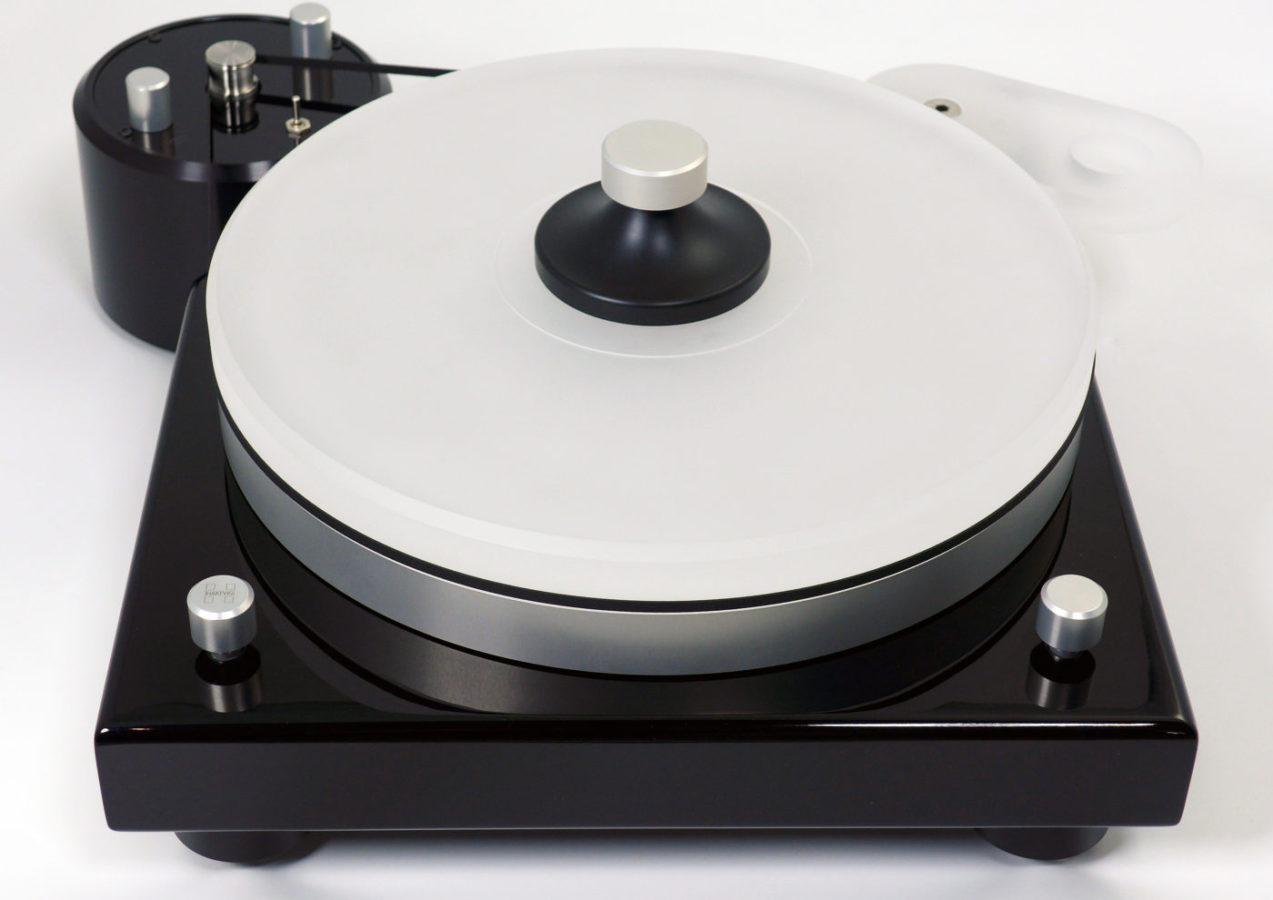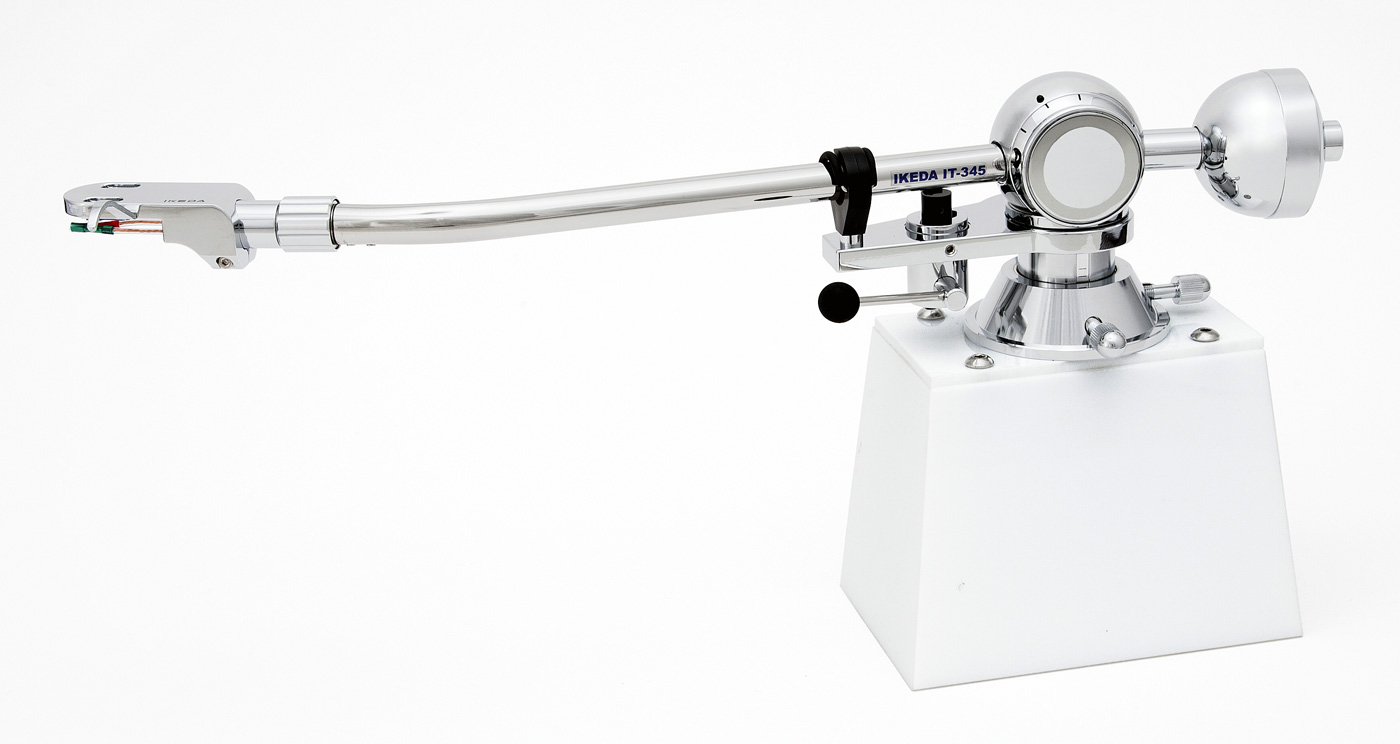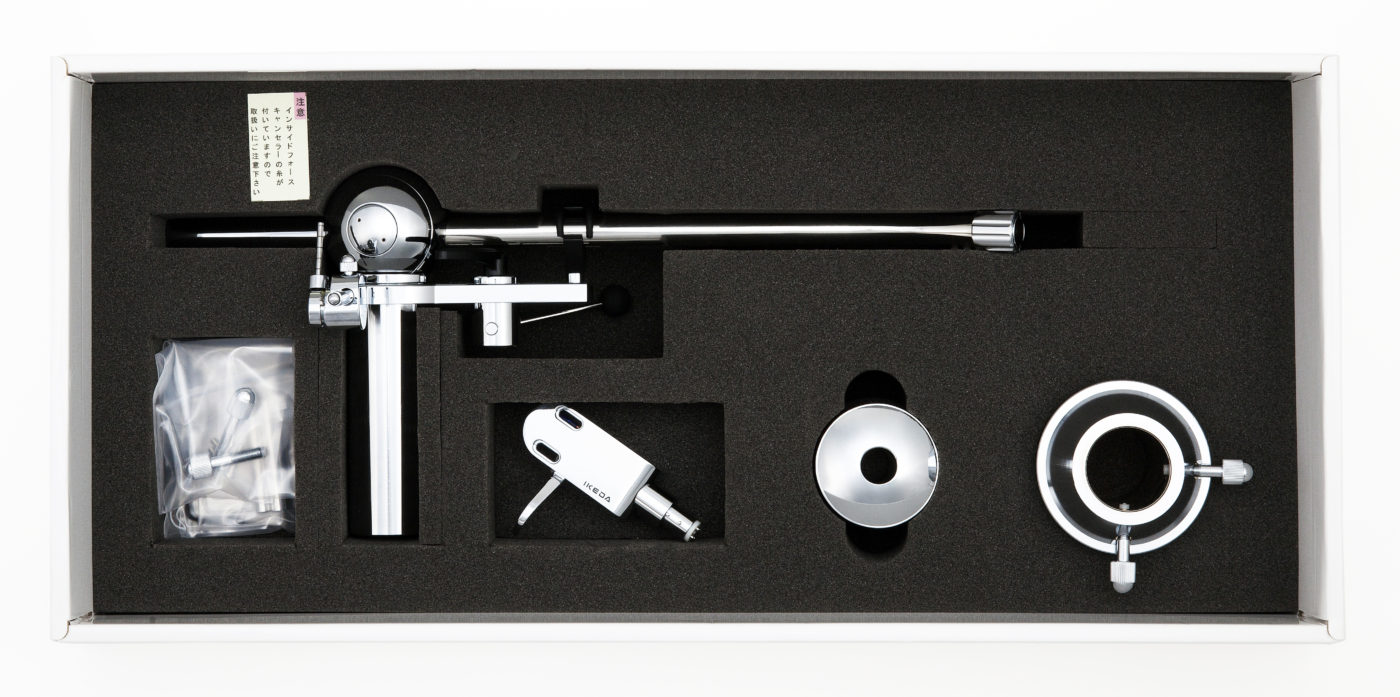Turntable design can be as much a fashion statement as that of sports cars and watches. By far, the turntable is the only component next to the loudspeaker that offers its designer considerable freedom in exercising artistic licenses. One extremity of such creative freedom comes in the form of turntables complete in their own five-foot tall, five-hundred-pound superstructure that houses a massive turntable plinth and correspondingly massive power supplies for the motors. For the vast majority of us, physically less colossal designs are more sensible, although they can still remain rather costly. The Hartvig TT, the subject of this review and a product of Denmark, retails for $13,500 and is a prime specimen in the minimalist school of design.
Weighing 29 pounds and taking up less square footage than the Bricasti M1 dual-mono DAC, the belt-drive Hartvig TT features a square block of handcrafted plinth made of a sandwich of MDF and acrylic, which is barely larger than its stacked 2-inch thick platters, with the top being made of acrylic and the bottom one of T6 series aluminum. In addition, the TT’s top acrylic platter is integrated with a stainless steel center shaft that is fastened to the platter itself. Once taken out of the original packaging, the two stacked platters needed to be separated for initial lubrication treatment before being installed together again over the spindle.
The Hartvig’s spindle is a hardened steel shaft with an aluminum base. At the top of the spindle is a precision honed bronze shell on which a tiny, lubricated ceramic ball is to be placed. The stacked platters are then fitted over the ceramic ball and the spindle.
My listening room is on a thin layer of hardwood over concrete floor, so vibration is not an issue and the Hartvig TT functioned accordingly on a Salamander Design audio rack. For readers in apartments or houses with raised wood slab flooring, additional, more elaborate footers and audio racks may be in order to facilitate further isolation of the Hartvig from vibrations. Two adjustable elastic-core feet adorn the front left and right of the turntable while a third, fixed one supports the rear.
A supplied acrylic arm board for mounting over the side of the plinth at rear right is secured with a single hexagonal bolt. This constitutes a variable geometry that can accommodate a slew of tonearms of different lengths. The Hartvig is a belt-drive design and a free-standing brushless, electronically regulated DC motor is relegated to the opposite corner of the arm board.
The review sample came in the standard high gloss black finish, while real wood veneer, wood with inlay and custom pearl paint are available for additional costs.
Three 0.04 lb (17 grams) polished steel and chrome plated Isoclean TT-007 small Tip Toe Base were placed under the Hartvig TT’s elastic-core feet. $60 for a set of four, these little jewel-like footers are the finishing touch of the Hartvig turntable system and I can envision an even more positive listening experience with the larger, 0.26 lb (120 gram) TT-008 ($160 set of four).
For this review, a Japanese, nine-inch, high-mass pivoting tonearm, the $6,900 Ikeda IT-345CR1 and a fully broken-in, $4,400 Ikeda 9TT moving-coil cartridge was also provided. The entire Hartvig TT and Ikeda system was of dealer stock, provided by Kaveh Saffari of Audiologic in Irvine, CA, via special arrangement by Brian Ackerman, the U.S. importer of both Hartvig and Ikeda. To complete the system, Brian shipped a $3,100 Stage III Analord Prime Extreme Resolution phono cable to me.
A Millennium M-LP-Mat and Boston Audio Design “The Mat” were alternated for use in this review.
A Pass Labs XP-25 twin-chassis phono preamp and Xs Preamp handled the feeble signal. A pair of Magnepan 3.7i was used in the auditioning along with a pair of Pass Labs XA200.5 pure class A monoblocks. With the exception of the $3,100 Stage III Analord Prime Extreme Resolution phono cable, this review was conducted with a complete Music Interface Technologies Cables Oracle network cable system. The Oracle MA-X SHD network cables between the Pass Labs XP-25 and Xs Preamp, and the Oracle MA-X for the XA200.8 monoblocks were set to a low impedance setting of 5-50k ohm and at maximum articulation. The Music Interface Technologies Z-Powerbar mitigated the power to the Hartvig, the Pass Labs XP-25 Phono and Xs Preamp via the MIT Cables AC II network power cables. Two columns of stacked Acoustic Science Corporation 14-inch TubeTraps were positioned on the front wall to diffuse the rear reflection of each speaker and another pair of TubeTraps, specifically a 14-inch atop a BassTrap, were put in the corners.
Vinyl music playback can be compromised by residual pressing mold and the very distracting surface noise of clicks and pops. Therefore, the first and foremost requirement for an enjoyable vinyl experience for me came in the form of the German Audiodesksysteme Glass Ultrasonic Vinyl Cleaner. The upright device submerges the down-side of a vinyl in its mixed solution of a proprietary solvent and distilled water and rotates it in cleaning cycles before blow-drying it. The Audiodesksysteme’s method is ingeniously conceived and executed and had thus immediately become indispensable to me for an immaculate listening experience.
Ikeda IT-345CR1 tonearm, 9TT moving-coil cartridge
Vinylphiles in their fifties and older will likely recognize the Ikeda name, a marquee from the 1980s that was synonymous with innovation, quality and exclusivity. Senior Reviewer Jack Roberts reviewed the Ikeda IT-407CR1 tonearm in 2012 and gave it high marks. The historical detail that Jack put together on the company and its owner is a good read.
The Ikeda IT-345CR1 tonearm is quite a treat to hold in one’s palms. The wand is consisted of a dual pipe structure with the outer pipe made of stainless steel and the inner pipe aluminum. three pieces of O-shaped ring are installed between the outer and inner pipes to dampen vibration. The body and shaft of the tonearm are made of brass.
The tonearm’s connector pin is rhodium-plated and the headshell is chrome-plated aluminum. The headshell’s connector, however, is made of titanium. Azimuth adjustment is provided on the headshell.
The IT-345CR1 is one of those rare metallic apparatus that magnificently withstands time after time of close-up scrutiny-turn-admiration. Vertical and weight adjustments is straightforward though relying largely on feel and visual cue. The upside to this is it is easy to loosen the bottom security bolt and adjust the VTA. The aluminum headshell with solid metallic feel is quite a beauty in itself, too, and straightforward to use. Answering my inquiry, the company claimed the tonearm employs dynamic balance as opposed to static balance, thus a “far superior tracing ability because the inner spring always control the stylus pressure stably and constantly.”
The Ikeda 9TT moving-coil cartridge used in this review is the second top cartridge in the company’s 9 Series, producing 0.16mVrms, flaunting a golden finish of an aluminum alloy body coupled to a neodymium magnet and lightweight, double layered duralumin cantilever. A very promising and potent mix. The upper model to the 9TT is the $8,500 flagship Ikeda KAI in a blue alumite buff finish with titanium top and base, boron cantilever, samarium-cobalt embedded generator, while the $2,800 entry-level 9TS in emerald finish tops the output at 0.35mVrms, also fitted with a double layered duralumin cantilever.
Auditioning
My reference system used to be the $4,800 47 Laboratory Miyabi/47 moving-coil, fitted to the company’s $14,500 47 Laboratory 4724 Koma turntable with the $2,250 Tsurube tonearm. While I had found the system to liberate dynamics and tonality colossally, the Hartvig/Ikeda system approached that dynamic finesse with more nuances.
Via the Pass Labs electronics and the Magnepan, playing the 45 Angel Sonic Series chamber music records such as the Mozart disk of Eine Kleine Nachtmusik and Albinoni’s Adagio by Neville Marriner and Academy of St. Martin-in-the-Fields, the Hartvig/Ikeda system yielded the most energetic and engaging sound to date. The hallmark of the best analog sound that is the liquid texture of instruments brass and string was also on sweeping display. The soundstaging was solid and spacious, giving the ensemble a substantial presence. I credit this exemplary performance to the Hartvig/Ikeda system’s ability to get out of the way of music.
Another 45 Angel disk, the Smetana “The Moldau” and Sibelius “Finlandia” reading by Herbert von Karajan and the BPO further testified towards the Hartvig/Ikeda’s solid performance. The presentation was the most spectrally extended for a 33 1/3rpm in recent memory. Although I would prefer even less euphony in general, there was remarkable neutrality in the midrange throughout. 33 1/3rpm LPs, on the other hand, carried less of that lushness than the 45rpms, with the Premium Records “Best Audiophile Oldies” being the astounding exception. The Ikeda 9TT delivered a slightly texturally richer performance from the LP than my Esoteric K-03/G-01 did with the same-titled XRCD, spreading the analog contagion to me.
On 33s such as the Deutsche Grammophon Horowitz 1984 recitals or a Living Stereo Rubinstein Chopin, the Hartvig TT/Ikeda stood testimonial to the most enduring aspect of the vinyl format, namely a sound that withstood the passage of decades, one that descended from the pressings of the LPs’ original releases. Being able to conjure up the flagrant tonalities of a physical media cut from some thirty years ago is monumental.
Conclusion
The $14k Hartvig TT belt-drive turntable system’s construction and use of materials, such as a MDF and acrylic-sandwiched plinth, a 2-inch acrylic platter over another 2-inch of aluminum platter are exotic and impressive and serves remarkably as the foundation of a high-end system. This construction exoticness and total turntable mass makes the Hartvig notable amongst similarly priced, substantial turntable designs although it’s highly economical footprint does make for a polarized appeal. By the same token, its ability to assume a pure, non-intrusive sonic footprint, however, is remarkable for the size. The $16,750 47 Lab 4724 Koma turntable with the 4725 Tsurube tonearm system is comparable in compactness and performance of the Hartvig with the Ikeda 9TT, thus represents considerable competition.
It is arguable that the true star of this system are the Ikeda CR-345 CR1 tonearm and the 9TT cartridge and the Hartvig provided a platform for them to glisten. The caliber of the Ikeda tonearm and the 9TT cartridge, in particular, is undisputed at the asking prices; one can easily visualize, in particular, the use of the 9TT in more ambitious setups. Employing an aluminum alloy body, the 9TT, in my opinion, produced a more controlled, uniform tonality than those with wood or polymer material. Coupled to a neodymium magnet and lightweight, double layered duralumin cantilever, the 9TT ought to be quite dynamic and even accurate than many.
For Dagogo readers wanting upgrade options later on, Hartvig also supplies a $6,100 battery power supply. Then, there is the 52lb, $28,400 Hartvig TT Signature Gramophone reference table available which can also be fitted with a solid copper platter.
Copy editor: Dan Rubin
- (Page 1 of 1)




